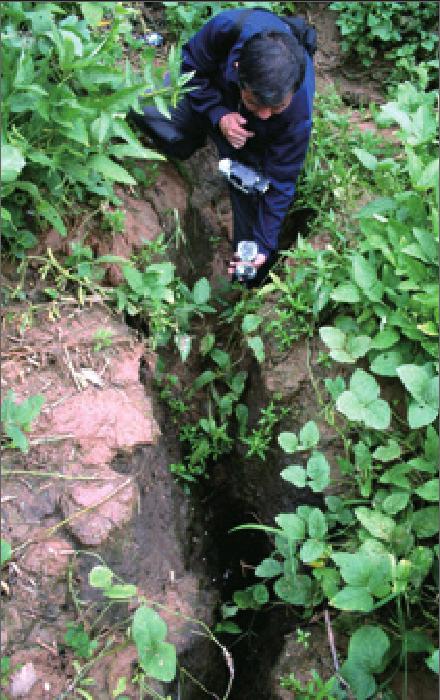Green Taxation Stepped up
2016-08-19ByWangJun
By+Wang+Jun

The reform of resource taxes has been expanded since July 1, to effectively play the role of taxation, ensure sound and sustainable development of resource industries, and promote growth through economic restructuring and transformation.
China introduced resource taxes in 1984 and expanded the tax levy in 1994 to seven categories of minerals, including oil, natural gas, coal and salt, based on quantity.
As of 2010, the government began experimenting with levying resource taxes based on prices instead of quantity. The reform was first implemented on crude oil and natural gas in northwest Chinas Xinjiang Uygur Autonomous Region from June 2010. This was then expanded across the country from December 2011. Price-based tax reform on coal was implemented nationwide in December 2014, and the reform was expanded to rare earths, tungsten and molybdenum from May 2015, with unnecessary fees being cut.
A joint statement from the Ministry of Finance (MOF) and the State Administration of Taxation (SAT) listed 21 new varieties of mineral subject to the new resource tax basis, including iron ore, gold ore, copper ore, graphite, kaolin, lake salt, methane and sea salt.
According to the statement, the resource tax reform will integrate taxes and fees on minerals, cut certain fees and determine reasonable resource tax bases and rates that will not increase the tax burden on enterprises. Authority over resource tax affairs will be delegated to local governments appropriately.
The MOF also said expansion of the resource tax reform is conducive to establishing a uniform resource tax regime and will create conditions for legislation on resource taxes in the future.
Why the reform
China has levied resource taxes for more than 30 years, and resource tax revenue has grown rapidly in the past 10 years, recording average annual growth of 27 percent.
In 2015, the country levied 103.5 billion yuan ($15.56 billion), accounting for 1.8 percent of the total local tax revenue, according to a press release by the MOF on May 10. Resource tax revenue has become an important source of fiscal revenue in resourcerich regions.
However, due to problems such as inflexible tax calculations and the overlapping of taxes and fees, the resource tax regime is unable to serve economic reform.
“Under the old regime, taxes are levied based on the quantity of resources,” said Zhang Tianli, Deputy Director of MOFs Tax Policy Department. After resource taxes are levied based on prices, taxes paid by resource enterprises will change when the prices of mineral products fluctuate, and corporate tax burdens will not be increased, Zhang added.
“Pilot reforms have been advanced steadily and have achieved remarkable success, cutting unnecessary administrative fees on resource products,” said Zhang. “In recent years, when prices of coal and other minerals kept dropping, this policy … alleviated the tax burdens of resource enterprises.”
According to a report in Economic Information Daily, coal-related administrative fees in 2015 were reduced by 36.6 billion yuan ($5.5 billion), while the resource taxes on coal increased by 18.5 billion yuan ($2.78 billion). As a result, the financial burden on Chinas coal enterprises was alleviated by 18.1 billion yuan($2.72 billion). After the price-based reform, the average tax burden was reduced from 10 yuan($1.5) to 5.5 yuan ($0.83) for every ton of molybdenum products.
Wang Jianfan, Director of the MOFs Tax Policy Department, said price-based reform of resource taxes will combine government tax revenue with the prices of mineral products, make the collection of resource taxes more flexible, alleviate corporate tax burdens and promote conservation of resources.
Water tax
According to the joint statement, a pilot tax reform on water resources will be carried out in north Chinas Hebei Province and will be expanded to forests, pasture and tidal zones in the future.
Zhao Jianguo, an official with the Hebei Provincial Department of Finance, said the province has the poorest water resources in the country. Its per-capita water resources are only one seventh of the national average, and the total volume and area of indiscriminate exploitation of groundwater accounts for one third of the countrys total, leading to the problems of declining groundwater levels and earth subsid- ence, and seriously threatening the ecosystem and sustainable development. Therefore, the province must take effective measures to strengthen conservation and protection of water resources.
“With the pilot reform of water resources tax, bills paid by families will not change,” said Zhao. According to him, water resource tax is levied on enterprises, and the rates of tax will be determined by area and industry. For example, for industries with high water consumption and in areas with high indiscriminate exploitation of groundwater, the water tax rates will be higher to encourage enterprises to save water and use reclaimed water.
According to the MOF, exploitation and use of surface water and groundwater will be subject to tax. Tax rates for exploitation and use of surface water must not be lower than 0.4 yuan($0.06) per cubic meter, while those for groundwater should be no less than 1.5 yuan ($0.23) per cubic meter. Specific tax rates will be formulated by the Hebei Provincial Government, subject to the approval of the MOF and other related authorities.
